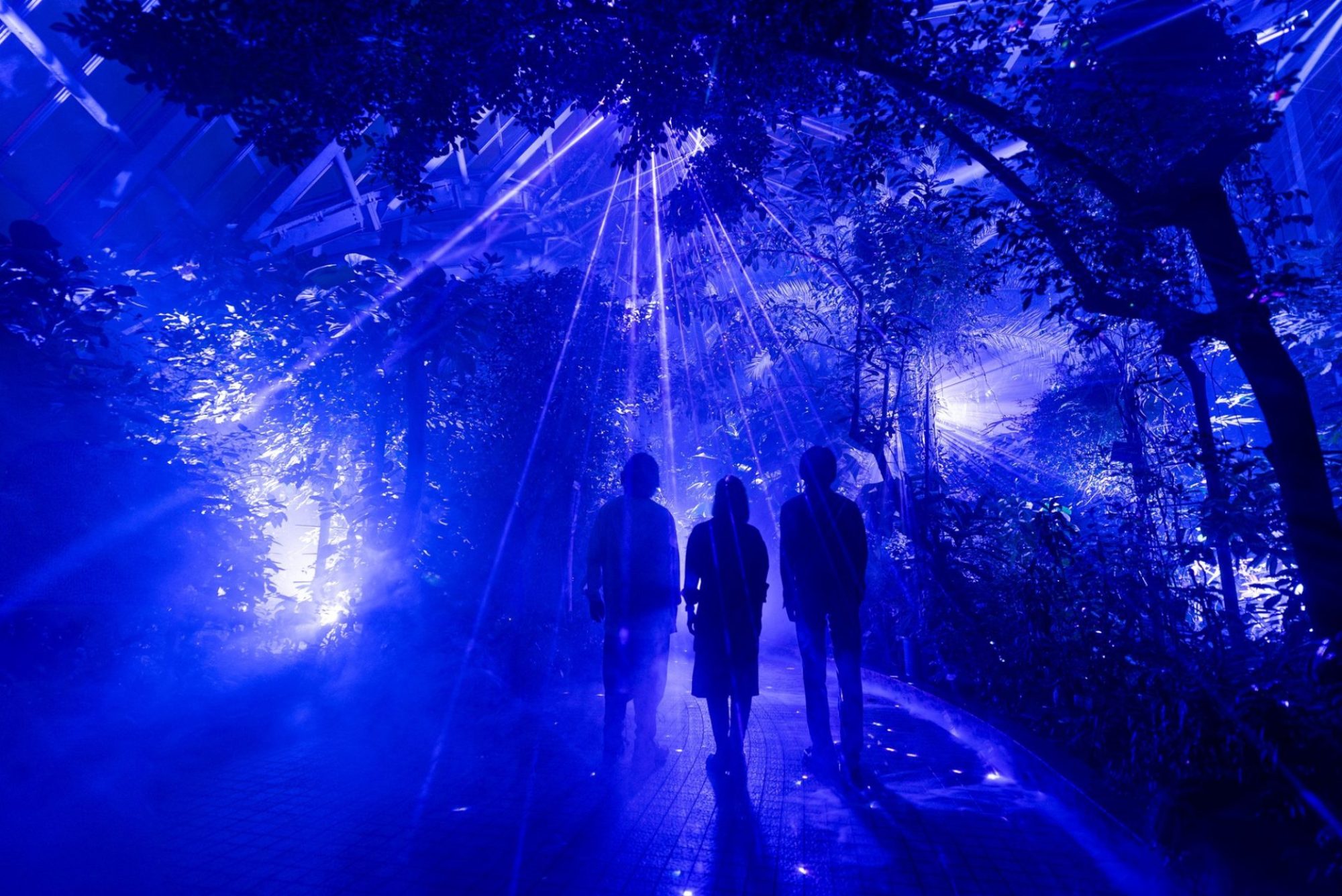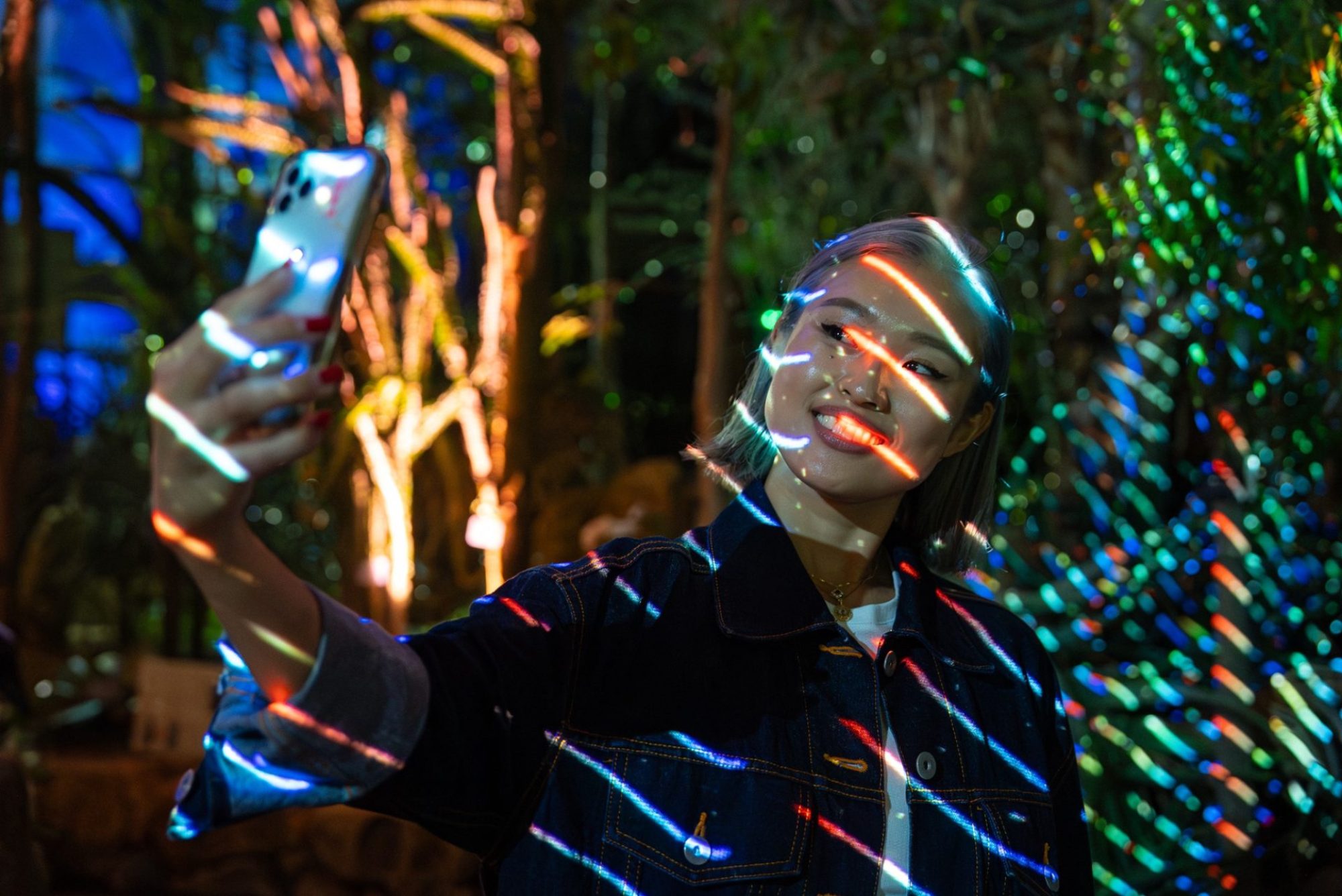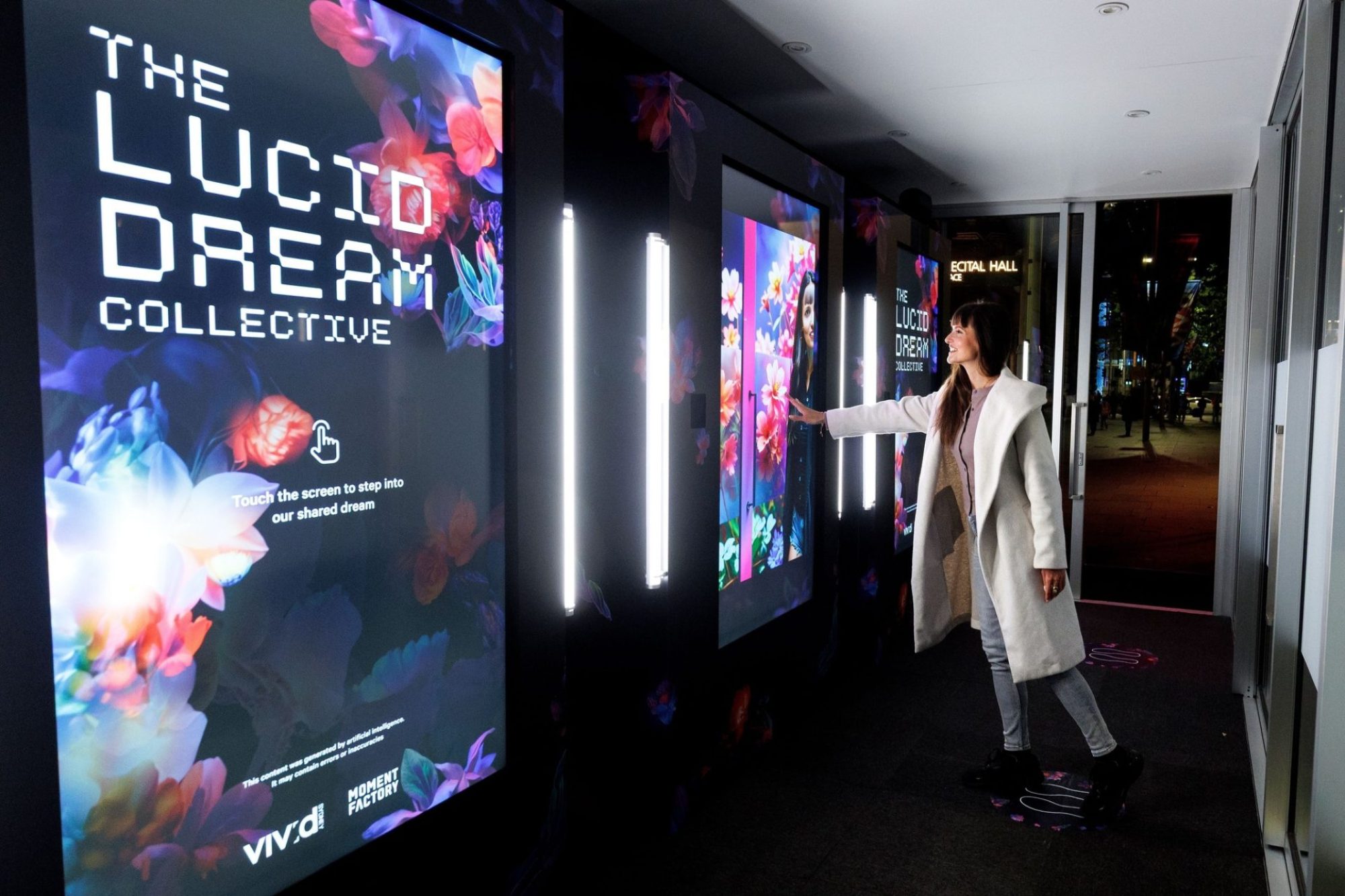Mastering Immersive Technology
We’ve all seen them, and quite a lot of us have worked on them, but what do we call them? I’m talking about events and installations that run at festivals like Vivid Sydney, Parrtjima – A Festival in Light and Dark Mofo. Often outdoors, sometimes indoors, and incorporating combinations of lighting, video, sound, projection, screens, sculpture, sets, or some kind of ‘activation’. Sometimes they’re so successful they become permanent, like Field of Light at Uluru.
A survey of these artistic events running all over the globe at the moment gives us a number of appellations; immersive activations, interactive lightshows, interactive experiences, sensory experiences, and multi-sensory installations, to name a few. As I write this, ‘Night Visions’ has just wrapped up at Adelaide’s Botanic Gardens. It had six experience zones created by five local and international artists and was billed as an ‘after dark experience’. More tellingly, it uses the ‘latest in immersive technology’.
And that’s the one thing that binds all of these art works together; technology, and lots of it, working together like clockwork, usually completely automated, and often in extreme weather conditions. The emergence of these experiences globally has seen production companies and manufacturers adapt technology originally intended for indoor use in theatres and cultural institutions to work at all hours, in all weathers, in outdoor environments open to the public.
Adelaide’s Novatech Creative Event Technology have been making interactive experiences work for over a decade, both indoors and outdoors, and have developed a suite of high-end, high-tech systems especially for the genre. I first wrote about Novatech’s multimedia solutions back in CX126 June 2017, when they provided the tech for the immersive exhibition Yidaki: Didjeridu and the Sound of Australia at the South Australian Museum. That was such a great success that it toured internationally, necessitating that the technical systems be transportable, robust, and reliable. These principles have informed Novatech’s work in this space ever since.
2021’s Light Cycles by Moment Factory is a perfect example of the demands on Novatech’s systems and design. First run in the Adelaide Botanic Gardens as part of the inaugural Illuminate Adelaide, the experience was created by international multidisciplinary entertainment studio Moment Factory. It went on to be installed in Wellington, New Zealand, with several key elements provided by Novatech, and then to Kyoto, Japan, with all systems supplied by Novatech as the technical partner.
“Light Cycles Kyoto is currently running in the Kyoto Botanic Gardens,” says Novatech’s Managing Director, Leko Novakovic. “But it’s not just outdoors, as it was in Adelaide and Wellington; it’s in three glass conservatories. One is a bone-dry environment for cacti, which is extremely hot, one is a tropical zone, humid and wet, and one is ice-cold and frozen. The gear has to work in those environments for months.”
It’s an extreme example, but the infrastructure Novatech have created over the years ensures the technical systems function perfectly in each environment. All control racks are housed in Novatech’s custom temperature controlled tents. They’re IP rated, durable, rodent and insect proof, and can be controlled remotely. From Kyoto’s glasshouses to the rigours of the dusty yet sometimes incredibly wet Alice Springs, and through to typically cold and wet South Australian winters, this infrastructure backbone stands up to the best and worst of Mother Nature.
In terms of technical systems design, these kinds of installations fall into two categories; multiple zones with central control and sources, or multiple zones with individual control and sources. Which approach is taken depends on the nature of the experience and the physical environment. In both approaches, Novatech utilises full remote access over a network and remote control via Wi-Fi.
For experiences using central control and sources, Novatech often deploys its OneSystem Constellation. The OneSystem “gig in a box” rack packages a host of production equipment and software, including Blackmagic’s flagship ATEM Constellation 8K switcher, multiple Hyperdeck recorders, Cloud Pods, and a small army of Micro Converters supported by a dedicated redundant power system. Working alongside the ATEM’s audio features, a Yamaha digital mixer and Dante Virtual Soundcard together bring local audio signals onto the network from the two Macs and two bespoke Windows servers. 10Gb networking bridges the computers and local storage, while redundant links securely connect racks and control equipment such as amplifiers and DMX nodes – reaching across a building, throughout a park, or even spanning entire suburbs.
The four computers are packed with every piece of production and control software you could want. QLab is often at the heart of playback and control for Novatech’s experience installations, effortlessly handling hundreds of channels of audio as well as tying together video and lighting networks reaching across many kilometres of redundant 10Gb fibre.
Along with Parrtjima – A Festival in Light which takes place annually in Alice Springs in the harsh reality of the Australian outback climate, a timely and similar example of an installation of multiple zones with individual control and sources is ‘Night Visions’ at Illuminate Adelaide 2025. “The creative team were happy for every zone to run its own, because the experiences are not interlinked,” explains Leko. “There are pros to having the whole show’s system in one spot, but there are also pros to having each zone separate as well.”
Keeping a watchful eye over Night Visions and many of Novatech’s other immersive experiences is an integrated PTZ CCTV system for remote control, recording, monitoring, and security, again typically on the same fibre backbone. The show also uses Layher Cassette projection towers supplied by Novatech’s sister staging company, Nexstage.
Spreading an entire gig out over significant distances in all weather conditions means that proactive monitoring of every piece of equipment is not just good practice, it’s essential.
To deliver true single-pane-of-glass visibility over the health of a technically and geographically diverse system, Novatech often relies on QSC’s Q-SYS. Custom dashboards cover every discipline involved – networking, amplifiers and speakers, projectors, lighting fixtures and control, surveillance, and more. These dashboards are available to technicians from anywhere worldwide and are typically presented on large displays in the control centre or site office for confidence.
Every single device used in the installation is monitored continuously, from master playback status to speaker wiring faults, fibre optic signal levels, mains voltages, right down to temperature and humidity at each distributed rack. Q-SYS inherently prioritises any error or abnormality, meaning that problems are identified instantly without additional troubleshooting. This level of proactive monitoring, combined with many layers of redundancy and fallback strategies, delivers an extremely high level of uptime for such events, maintaining the highest standards of artistic delivery while also maximising ticketed capacity.
In some instances, this holistic capability has extended Novatech’s reach even further: with careful planning, Novatech were able to deliver the aforementioned Yidaki exhibition on-site in Japan, with technicians only monitoring and maintaining the installation from Australia – leaving only very minor on-site assistance needed from non-technical gallery staff.
More recently, Novatech and Moment Factory again leveraged this experience in highly connected events, delivering an installation at Vivid Sydney 2025. The globally distributed team included programmers and technicians from Montreal, Tokyo, Sydney, Melbourne, Adelaide, and LA, collaborating seamlessly on both the on-site and cloud-hosted elements, even keeping an eye on punters’ interaction with the system via cameras.
Observing that “anyone can stick a no-name LED Par in a tree”, Leko and Novatech insist on using only the best for their immersive works. L-Acoustics is their PA of choice, running on a Dante backbone, and designed and modelled in L-Acoustic’s Soundvision software. Lighting is IP65 rated, with fixtures typically from Ayrton and Elation, running on grandMA3 control systems. Video utilises ROE LED, Barco projection, and runs on software and hardware from disguise, QLab, MadMapper, and Touch Designer. Lasers from Kvant and Unity Lasers are controlled by Pangolin’s Beyond control software with complete E-stop safety solutions.
“We have applied our design principles for these installations systematically, and that’s how it all glues together,” concludes Leko. “That’s why I like to think our work in this field stands out from others. Often working with leading designers and creatives from across the globe, everything we do is focused on the best possible experience for the audience and client. We provide an integrated solution with everything; control, power, audio, video, lighting, camera, rigging, towers. There’s not many who can say that.”
For over a decade, Novatech have honed their systems to be flexible, robust and highly reliable to provide creative houses and producers the confidence to dare to think big. The demand for immersive experiences is growing exponentially as is the need to keep making them more engaging, creative and worth the investment by organisers and attendees alike. Novatech are deep in planning for gigs locally and overseas with continual enhancements and new systems to help push technical boundaries for years to come.
Photo Credit: Moment Factory



